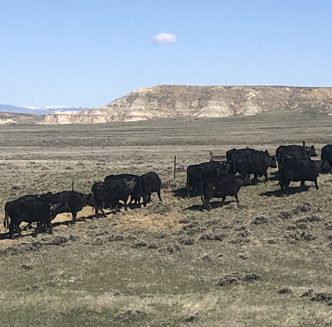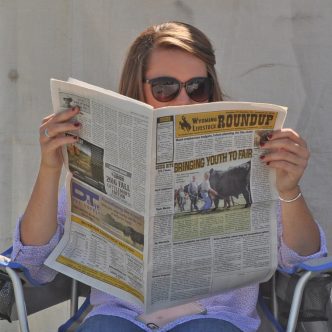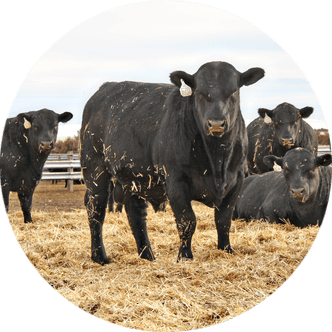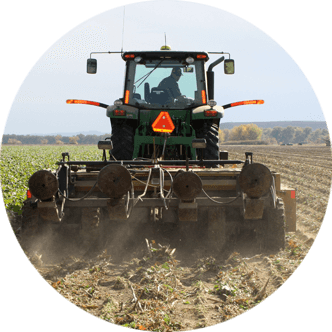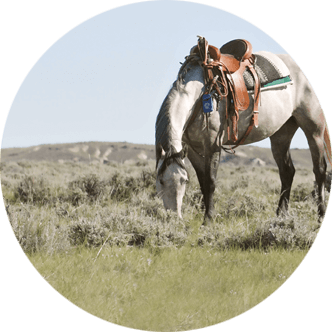UW Extension Education: Tips Offered for Planting Seedling Trees
Springtime brings long lists of work to do, whether it is lambing, calving, branding, working on machinery or getting fields ready to plant.
For many, planting new trees is another task on the annual list. This might mean replacing dead trees found in tree windbreaks, planting new windbreaks or just planting a tree in the yard. Regardless of the location and purpose, planting seedling trees can be a challenge.
Before planting seedling trees, take a close look at where the trees will be planted. Will there be enough space for the trees as they grow to maturity in 10, 20 or 50 years? Are there any buildings, structures or power lines which need to be considered?
Once the location is determined, what type of tree should be planted? It’s important to research which tree species are best suited for the area.
A good starting point is to observe what types of trees are growing naturally in the surrounding area and select similar species. Exotic species or species which are not native to the area may not survive or may have a shortened lifespan.
If evergreens are to be planted, some varieties may require protection to prevent sun scalding. Evergreen needles are very tender as seedlings, and care should be taken to protect them from the sun’s heat and from direct contact with the wind.
Taking these precautionary steps in the beginning often saves time and money in the future, especially if the trees die and need to be replaced.
The following steps can help increase the survival rates of seedling trees.
Choose the right location
Whether selecting a new location to plant trees or filling in an established tree row, choosing the correct location is key to seedling success. Most trees need full sun, meaning six or more hours per day.
In a newly established tree windbreak, the young seedling trees receive equal sunlight distribution, allowing for maximum growth potential.
However, if the seedlings are used to fill gaps in an established tree row, full sun may be harder to obtain, as the canopy of the established trees will most likely shade the new seedlings and reduce their growth rate. Care should be taken to choose replacement tree varieties that may tolerate more shade.
Soil type should also be considered. Wyoming soil varies widely across the state and within counties. To determine the soil type in any given area, a soil test is recommended. Soil tests provide information on nutrient availability, pH, organic material, saline content, texture and more.
Although all of the information provided is important, soil texture plays an important role when planting seedling trees. Well-drained soil that is not compacted is preferable. If the soil contains high levels of clay or silt, care should be taken to provide seedling trees with enough room for their roots to spread out.
The mature size of the tree should be taken into consideration when choosing a planting location. Trees should not be planted within 15 feet of buildings, more than three feet from pavement and no less than 15 feet from other trees. Mature trees which will grow over 30 feet tall should be planted more than 25 feet from wires.
Once the planting location has been selected, make sure to check for any town, municipality or Home Owners Association regulations regarding landscape ordinances. It is required by law to call the underground utility locating service in an area at least two business days before planting to be sure there are no buried utilities under the location selected for planting.
To access this service, call 811 or 800-849-2476. Most services will mark utility lines for free.
Prepare the seedling
The best time to handle seedling trees is when they are still in dormancy, meaning they do not have buds or leaves yet. Depending on the time of year, planting seedlings while they are dormant may not always be possible.
However, it is vitally important to plant them as soon as possible to provide the best chance of survival.
One of the most important rules is to keep the roots of the seedling trees moist. This can be accomplished by soaking bare root seedings in water for one to two hours before planting.
Regardless of whether the seedlings are bare root or come in a container, they should be kept in a shady, cool area until they are ready to be planted.
Seedlings should be handled with care to prevent damaging young trees. Note it is easy to damage the delicate roots of the seedlings when separating bare root stock.
Dig the hole
A good rule of thumb is to dig a hole the depth of the seedling’s root system, allowing all of the roots to extend fully without bending and at least twice as wide as the root width when spread out.
Digging the proper hole size reduces the likelihood of bound roots or circling roots, which can girdle and eventually kill the tree.
Plant the seedling
Place the seedling in the hole as upright as possible, making sure to keep the root collar – the area where the stem meets the roots – at or slightly above ground level.
If the seedling has bare roots, gently spread the roots out as described above. If the seedling is from planted stock, gently rough up the soil surrounding the roots, releasing any which may be bound up and make sure there are no roots growing in a circle to prevent future girdling.
Next, gently cover all of the roots with firmly packed soil to eliminate air pockets. If planting a bare root seedling, fill the hole halfway, gently hand pack the soil, then completely fill and gently hand pack again.
Make sure to avoid mixing in any organic matter, such as twigs, leaves, needles and branches, as this can affect water drainage and create air pockets, which will dry out the seedling’s roots, potentially killing the seedling.
Water well
Once the seedling is planted, water deeply, applying water to the entire planting area to encourage root growth development.
Fill any holes created by soil settling with additional soil. Take care not to pack the wet soil.
Care of seedling
During the seedling’s first year, provide water every two to four days.
The ideal watering frequency depends on the type of soil present. Soil with more clay will retain water longer and therefore will not need to be watered as often, whereas soil with more sand will need water more often.
When possible, consistent irrigation for the first one to five years significantly improves the establishment and initial growth of the seedlings.
Water requirements vary depending on drainage and weather conditions as well as soil type. Ideally, the seedlings should have six to 12 inches of moist soil. However, if water availability is limited, the seedlings can survive on natural precipitation, although the death loss may be higher.
Fertilizer is not recommended during the first year of growth as it may limit root growth. Fertilizer application after the first year should be based on soil test results.
Placing a layer of mulch around the base of the seedling reduces soil moisture loss. Mulching the seedling will also discourage weed growth and reduce competition for water and nutrients.
If animal damage is a concern, placing a barrier around the seedling or seedlings may provide protection.
Common strategies include placing wire mesh or a plastic tube around the seedling, placing hexagonal wire mesh along the bottom of a six- to eight-feet-high fence to keep rabbits and deer from entering the area or using fine screen to keep plant-loving insects such as grasshoppers off of the seedlings.
Pruning may be introduced, if necessary, after three years. Any devices used to prune the trees should be sharp.
To reduce the introduction or spread of disease, pruning instruments such as shears or saws should be disinfected after every cut by dipping the instruments in a vinegar and water solution or a chlorine bleach and water solution.
Resources
Many Wyoming natural resource districts offer an opportunity to order and purchase bare root seedling trees in the spring. Note most seedling trees come in bundles, most often 25 seedling trees to a bundle.
Available species may vary from district to district. For more information on purchasing bareroot seedling trees, contact a local natural resources district.
The University of Wyoming (UW) offers many publications on successfully planting and growing trees in Wyoming. For more information, contact a local UW Extension educator or visit barnyardsandbackyards.com.
Amy Smith is a University of Wyoming Agriculture and Natural Resources Extension educator. She can be reached at asmit207@uwyo.edu.

